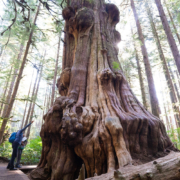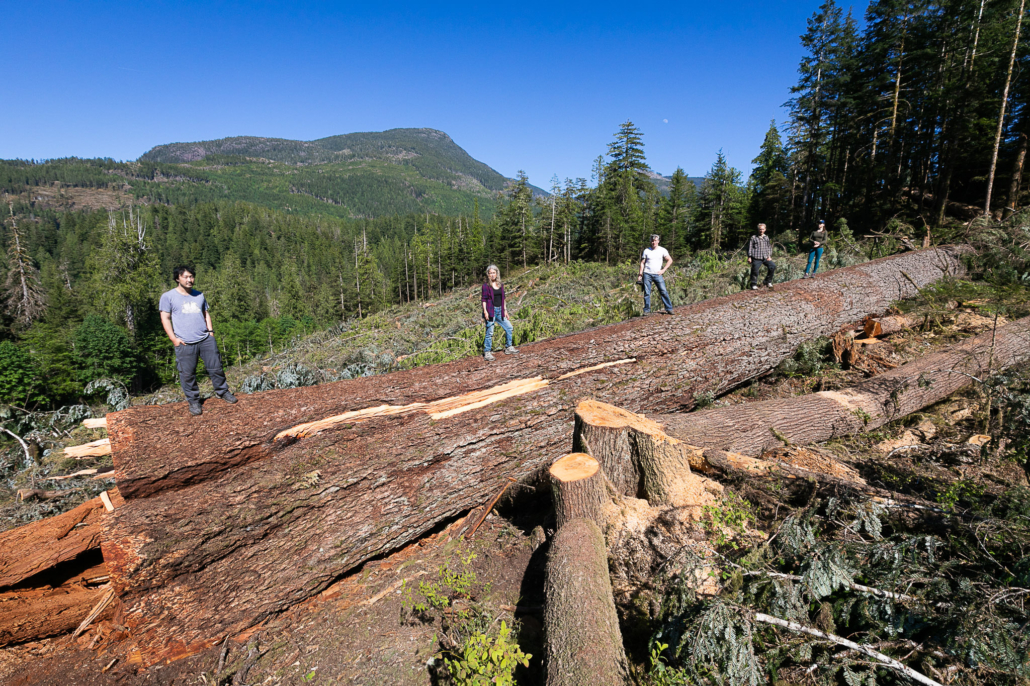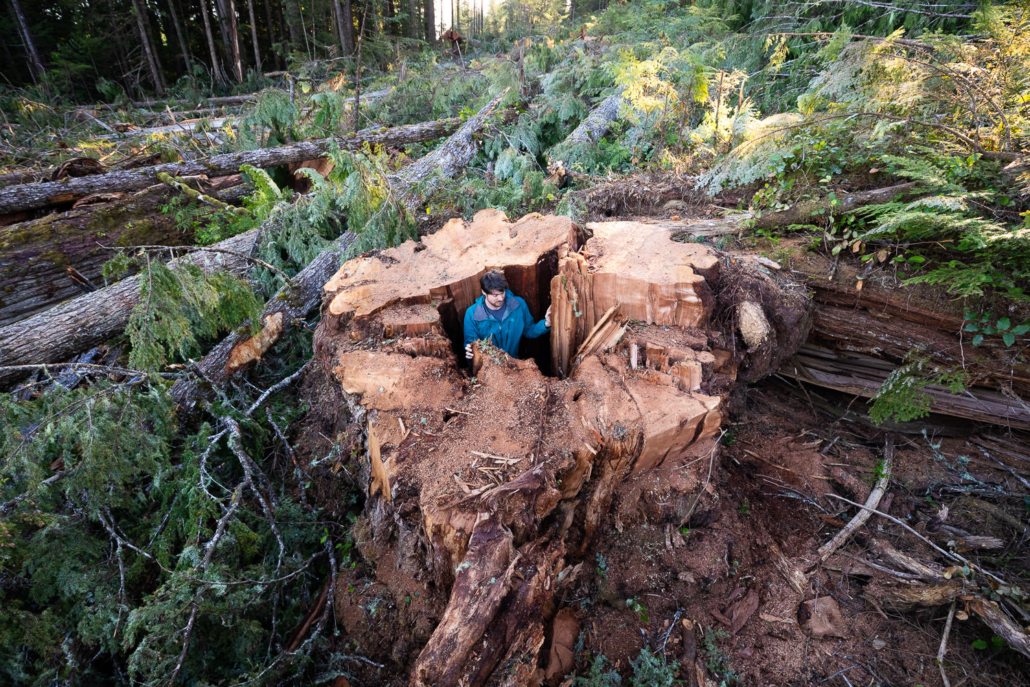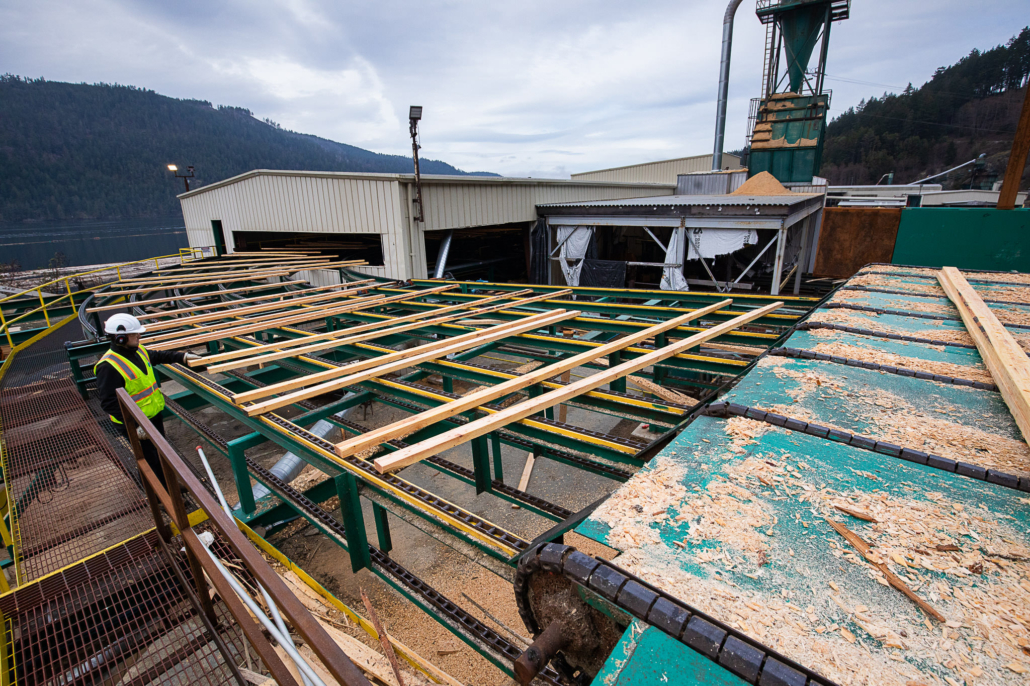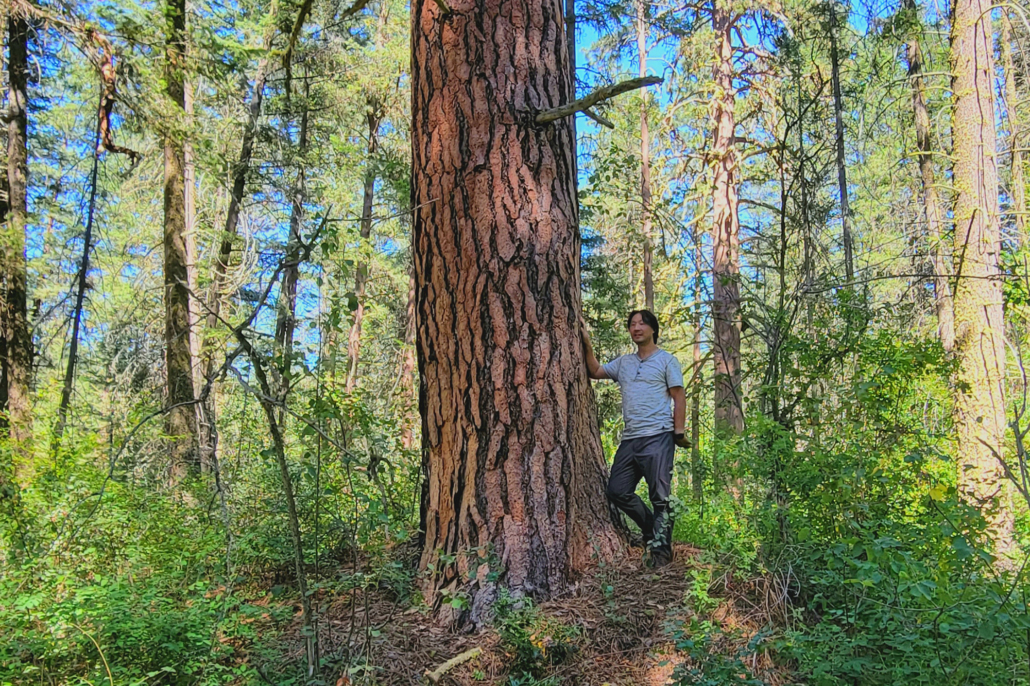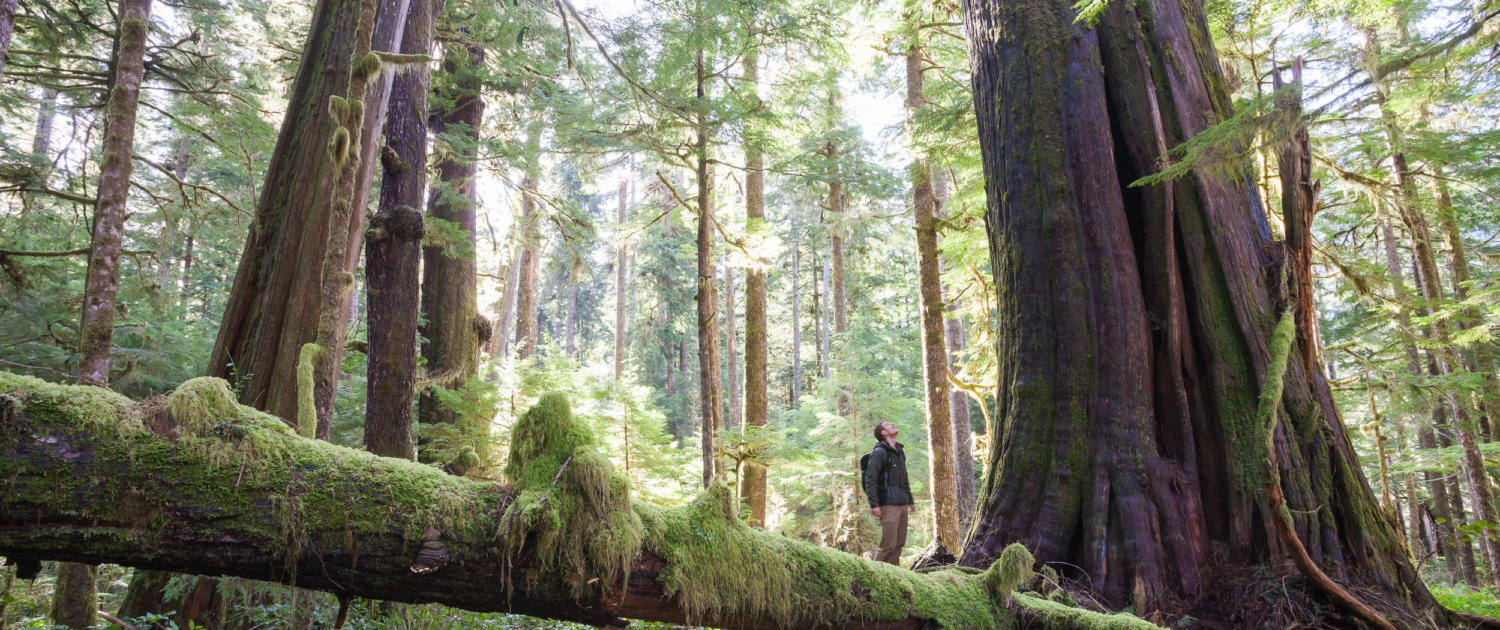 Jun 24 2021
Jun 24 2021New study reveals old-growth forests are worth more to BC economy standing than logged
Old-growth forests in BC contribute far more economic benefit to society when kept standing, according to a new independent study released today by the Ancient Forest Alliance.
The study, conducted by environmental consulting firm ESSA Technologies, compares ecosystem services including carbon storage/sequestration, recreation, tourism, coho salmon habitat, non-timber forest products like floral greenery and mushrooms, and research/education opportunities to timber harvest and concludes that society is better off when old-growth forests are protected rather than logged.
Read the full report: https://staging.ancientforestalliance.org/old-growth-economic-report/
Using old-growth forests located in Pacheedaht and Ditidaht territories near Port Renfrew – where independent protesters have been blockading old-growth logging for ten months – as a case study, the analysis is the first of its kind on Vancouver Island and provides a striking example of the tremendous economic benefits should the province fulfil its commitment to protect old-growth forests.
The study uses computer modelling, provincial forest harvest data, and both market and non-market values for ecosystem services to compare the net benefits of protecting old-growth forests across 17 different scenarios ranging from minimal (30%) to full (100%) old-growth protection.
The analysis shows society would be better off under all 17 old-growth protection scenarios, with the main economic drivers being carbon storage/sequestration (which reduces the significant costs of mitigating climate change), tourism, and recreation. For example, protecting all old-growth forests in the study area would contribute an additional $40 million in net economic benefits over the next 100 years compared to business as usual, more than making up for the economic losses from forgone timber harvest. Forest carbon emissions would be reduced by 569,250 tonnes of carbon and tourism and recreation alone would contribute almost $11 million in net benefits to society.
Because the study is based on only a portion of harvestable old-growth near Port Renfrew and isn’t inclusive of all ecosystem services, like cultural values, the study’s findings are underestimates of the true value of standing old-growth. Nevertheless, they present a strong economic case for keeping old-growth forests standing.
A secondary analysis was also done to assess the impact to the provincial economy of old-growth protection in the area by comparing the effects of the 17 scenarios on GDP and jobs from timber harvest and tourism. Results show that, if all old-growth forests were protected in the study area, tourism alone would nearly make up for any losses from not harvesting by adding an equivalent number of jobs and covering 66% of the losses to GDP. While not considered in the study, local benefits of old-growth protection from additional revenue streams like carbon offsets, sustainable fisheries, and value-added wood manufacturing could also increase.
With the NDP government having committed to implementing all of the Old Growth Strategic Review Panel’s recommendations and overhauling BC’s forest policies, there is a critical window of opportunity for the province to begin to manage old-growth forests in a way that benefits all British Columbians, not just special interests.
The Ancient Forest Alliance is calling on the province to immediately halt logging in BC’s most at-risk old-growth forests and commit significant funding for First Nations’ sustainable economic development, as an alternative to old-growth logging, and Indigenous protected areas that conserve old-growth forests.
QUOTES:
Walt Judas, CEO, Tourism Industry Association of BC – “Tourism is one of BC’s core industries and I’m confident that, as travel restrictions ease, we’ll see the sector begin to recover from the devastating impacts of the pandemic. Virtually every community throughout the province relies on tourism and the revenues and employment opportunities generated by visitors. Much of this growth is driven by international tourists keen to experience BC’s natural beauty, including our rare and majestic old-growth forests. With much existing and potential tourism value to be gained from old-growth, it makes economic sense to keep what’s left standing.”
Scott Benton, Executive Director, Wilderness Tourism Association of BC – “Scores of wilderness tourism businesses in BC rely on healthy, functioning ecosystems, including intact and protected old-growth forests and monumental trees, for their revenues. Continued logging of these irreplaceable forests not only adversely affects the wilderness tourism sector, it damages BC’s reputation as a wilderness destination through the loss of wilderness experience.”
Karl Ablack, President, Port Renfrew Chamber of Commerce. In 2016 the Port Renfrew Chamber of Commerce put forth a resolution to the BC Chamber to support the protection of old growth forests in areas where these forests had greater tourism value left standing. This resolution was unanimously adopted. – “This new study is consistent with what we’re seeing on the ground here in Port Renfrew. Thanks to increased international and domestic tourism and recreation tied to old-growth forests, tourism business revenues in town have gone up dramatically in the last decade. And as a developer, I’ve seen how increased interest in purchasing property, opening new businesses, and building homes has led to higher real estate values in the region.”
Jim Pojar, Ph.D., R.P.Bio., forest ecologist – “Old-growth temperate rainforests, including those found here in BC, store more carbon per hectare than any other forest type on Earth. As this new economic analysis illustrates, some of the enormous costs associated with mitigating climate change and the massive carbon emissions from old-growth logging could be avoided if we simply stopped cutting down these valuable carbon stores.”
Duncan Knowler, report co-author, Simon Fraser University associate professor – “When the province makes decisions to log old-growth forests without considering the many ecosystem services they provide like clean water, tourism and recreation, habitat, greenhouse gas mitigation, and more, they’re essentially saying these other benefits are worth nothing. This paints an incomplete picture of what ancient forests are truly worth and, in the face of the climate and biodiversity crisis, it’s not how land-use decisions should be made.” “This exciting new study builds upon our 2008 work to assign an economic value to old-growth spotted owl habitat in the Lower Mainland’s Fraser Timber Supply Area. It shows that there are innovative valuation tools for ecosystem services at our fingertips that can and should be used to make better decisions about how our irreplaceable old-growth forests are managed.”
Andrea Inness, Campaigner, Ancient Forest Alliance – “This study shows that local economies – and the broader provincial economy – both stand to benefit when we protect old-growth forests. It directly contradicts the BC Forest Minister’s argument that it’s too costly to halt logging in at-risk old-growth due to its timber value. It’s now up to the province to decide whether they’ll use this new information to improve decision-making and whether they’ll support communities in realizing the economic value of intact, protected old-growth forests.”
TJ Watt, Campaigner and Photographer, Ancient Forest Alliance – “The BC government is failing to manage old-growth forests in the public’s best interests. By continuing to allow status quo old-growth logging, they’re putting the interests of the timber industry ahead of other sectors and the BC economy as a whole. The province must step forward with significant funding for First Nations and forest-based communities in order to support new protected areas and sustainable economic diversification.”
-30-

